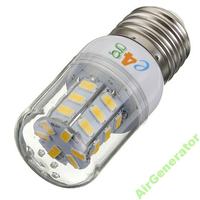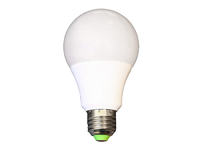Hello.
I plan to make portable lighting based on an LED bulb powered by a gel battery. It would look like this:
- 12V 7.2Ah gel battery;
- battery protection against excessive discharge (up to 10.5V);
- connector, e.g. through / rocker;
- E27 bulb fitting;
- LED bulb 12V 5W or 7W, for example:


- all this connected with a thin wire, e.g. 2x1 mm2.
Now questions.
1. Will it work?
2. I calculated that a 5-watt light bulb with a fully charged battery should shine for about 17 hours. Right?
3. I will have to buy a battery, so a charger for it. And now the question is what. "Eye" caught my eye:

Specification:
Input voltage 100-240V AC 50Hz / 60Hz
Supported batteries 6V / 12V DC automatic detection
gel, lead-acid, AGM, VRLA, VLA, SLA, WET, GEL, Lead-Acid
Supported battery capacity: above 1.2Ah
Efficiency> 75-80%
Charging voltage approx. 14V for 12V batteries,
7V for 6V batteries
Charging current 1A
Working temperature -10..40st. C (power limitation at higher temperatures)
Dimensions 9.5 x 5.8 x 3.3 [cm]
Other length of the AC power cord approx. 0.5 m, total length of connections (with crocodile clips or eyelets) approx. 1.8 m
The set includes the everActive CBC-1 automatic charger,
user manual PL / EN / DE,
connection with crocodile clips, connection with eyelet terminals
Approximate charging time 5 Ah - 7 h
10 Ah - 14 h
50 Ah - 70 h
100 Ah - 140 h
It seems to me that such a charger, due to the charging voltage of approx. 14V, is suitable for charging the battery during buffer operation, but
fails the test in cyclic operation (where the charging voltage should be approx. 15V). I'm wrong? If not, what other inexpensive rectifier could you recommend me?
I plan to make portable lighting based on an LED bulb powered by a gel battery. It would look like this:
- 12V 7.2Ah gel battery;
- battery protection against excessive discharge (up to 10.5V);
- connector, e.g. through / rocker;
- E27 bulb fitting;
- LED bulb 12V 5W or 7W, for example:


- all this connected with a thin wire, e.g. 2x1 mm2.
Now questions.
1. Will it work?
2. I calculated that a 5-watt light bulb with a fully charged battery should shine for about 17 hours. Right?
3. I will have to buy a battery, so a charger for it. And now the question is what. "Eye" caught my eye:

Specification:
Input voltage 100-240V AC 50Hz / 60Hz
Supported batteries 6V / 12V DC automatic detection
gel, lead-acid, AGM, VRLA, VLA, SLA, WET, GEL, Lead-Acid
Supported battery capacity: above 1.2Ah
Efficiency> 75-80%
Charging voltage approx. 14V for 12V batteries,
7V for 6V batteries
Charging current 1A
Working temperature -10..40st. C (power limitation at higher temperatures)
Dimensions 9.5 x 5.8 x 3.3 [cm]
Other length of the AC power cord approx. 0.5 m, total length of connections (with crocodile clips or eyelets) approx. 1.8 m
The set includes the everActive CBC-1 automatic charger,
user manual PL / EN / DE,
connection with crocodile clips, connection with eyelet terminals
Approximate charging time 5 Ah - 7 h
10 Ah - 14 h
50 Ah - 70 h
100 Ah - 140 h
It seems to me that such a charger, due to the charging voltage of approx. 14V, is suitable for charging the battery during buffer operation, but
fails the test in cyclic operation (where the charging voltage should be approx. 15V). I'm wrong? If not, what other inexpensive rectifier could you recommend me?


